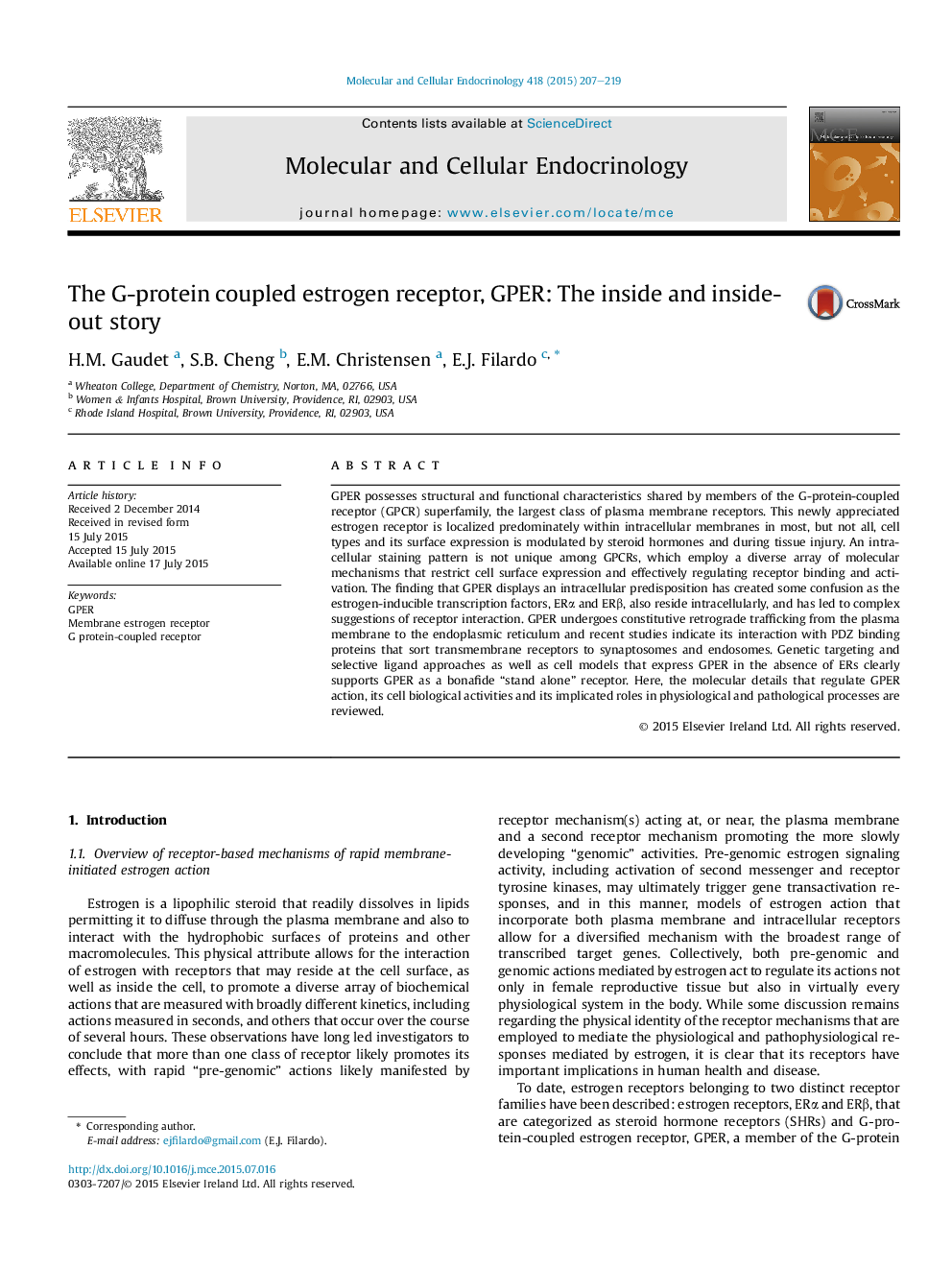| Article ID | Journal | Published Year | Pages | File Type |
|---|---|---|---|---|
| 2195759 | Molecular and Cellular Endocrinology | 2015 | 13 Pages |
•GPER triggers rapid “pre-genomic” signals via heterotrimeric G proteins activating intracellular signals associated with homeostasis and cell survival.•Native GPER is found largely within intracellular membranes,and on the cell surface following tissue injury or in response to sex steroid hormones.•GPER undergoes constitutive endocytosis and new evidence suggests that GPER associates with interacting proteins that may influence its signaling and trafficking fate.•GPER is implicatedin numerous physiological responses including: vasoregulation, metabolism and energy homeostasis, water reabsorption, skeletal remodeling, immune regulation, and neurotransmission.•GPER protects from injury in models of atherosclerosis, myocardial infarction and global ischemia, metabolic diseases such as diabetes and obesity and in cancer.
GPER possesses structural and functional characteristics shared by members of the G-protein-coupled receptor (GPCR) superfamily, the largest class of plasma membrane receptors. This newly appreciated estrogen receptor is localized predominately within intracellular membranes in most, but not all, cell types and its surface expression is modulated by steroid hormones and during tissue injury. An intracellular staining pattern is not unique among GPCRs, which employ a diverse array of molecular mechanisms that restrict cell surface expression and effectively regulating receptor binding and activation. The finding that GPER displays an intracellular predisposition has created some confusion as the estrogen-inducible transcription factors, ERα and ERβ, also reside intracellularly, and has led to complex suggestions of receptor interaction. GPER undergoes constitutive retrograde trafficking from the plasma membrane to the endoplasmic reticulum and recent studies indicate its interaction with PDZ binding proteins that sort transmembrane receptors to synaptosomes and endosomes. Genetic targeting and selective ligand approaches as well as cell models that express GPER in the absence of ERs clearly supports GPER as a bonafide “stand alone” receptor. Here, the molecular details that regulate GPER action, its cell biological activities and its implicated roles in physiological and pathological processes are reviewed.
